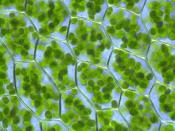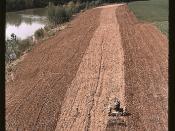Although a few places on earth would seem impossible for a plant to survive many have adopted to the environment from millions of years of evolution. A plants basic needs are similar to any other organism water, food and sunlight. In this essay the three extreme conditions I will be writing about will be the freezing Arctic, Dry Desert and extremely wet rainforest.
Firstly In the Desert the obvious basic requirement is enough water. Due to this the plants in the desert have affective features to deal with the problem. Firstly whenever rain does fall the plants make sure they have strong enough wide enough roots to suck up any surrounding water. more importantly than this the plants also have guard cells which protect where the water is stored in the stomata. They cover the stomata to stop evaporation. An example of a plant which uses these adaptations is Saguaro Cactus which cans store thousands of litres worth of water.
In order to make sure more plants grow some plants produce their seeds only in the wetter and cooler months this is so if a plant withers and dies in the drier hotter months their seeds still survive and will have to wait until rain falls again.
In the artic the most obvious problems are lack of water, nutrients and being to cold for the plants to photosynthesis . To fight these plants have come up with many ways to adapt. Plants can only photosynthesis when the temperature is over 6 c and when there is light. In the artic for the conditions perhaps for a few days of the year are good enough to photosynthesis. These plants are often very small and only produce very little flowers and leaves because...


